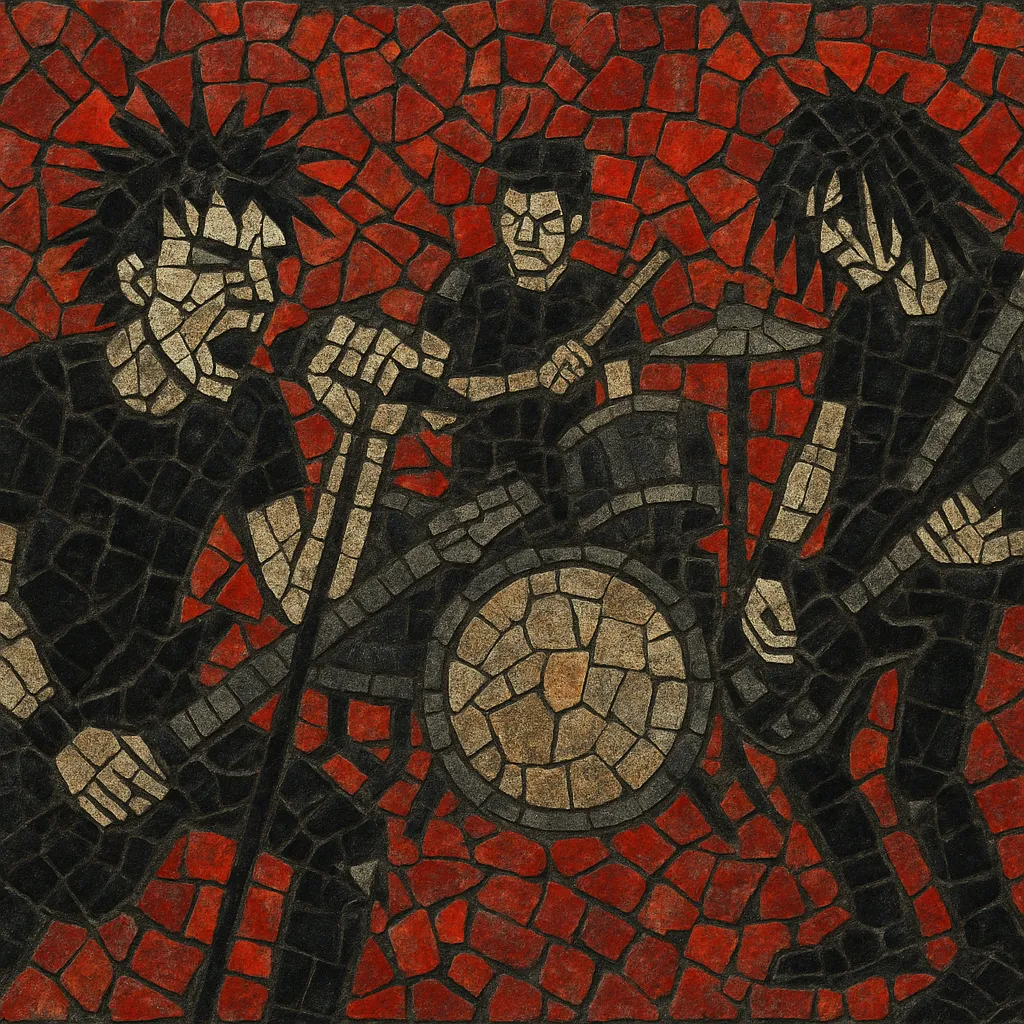Raw punk is a deliberately primitive, high-intensity strain of hardcore punk that prizes sheer impact over finesse. It is defined by blown-out guitar distortion, bass that hammers root-note patterns, relentless D-beat or straight-ahead 2/4 drumming, and hoarse shouted vocals.
Aesthetically, raw punk aims for a lo‑fi, immediate sound: recordings are often live-in-the-room, under-produced, and intentionally abrasive, with tape saturation and clipping treated as part of the music’s energy. Lyrically it remains staunchly political—anti-war, anti-authoritarian, and anti-fascist—delivered in short songs that rarely waste a second.
While rooted in UK ‘82 hardcore, the scene became especially associated with Sweden (and broader Scandinavia) and Japan, where bands pushed the extremes of speed, noise, and minimalism without drifting into metal. Compared to crust punk, raw punk is typically less metallic and more stripped-down; compared to straight D-beat, it tends to be even more sonically overdriven and chaotic.
Raw punk’s roots lie in the UK’s late-’70s punk and early-’80s “UK82” hardcore surge. Bands like Discharge distilled punk to its essentials—pounding D‑beat rhythms, power‑chord riffs, and blunt protest lyrics—which set the template. DIY recording and xeroxed artwork became core values, shaping both the sound and presentation.
Sweden rapidly became a nucleus for this even more primitive approach: Anti‑Cimex, The Shitlickers, Mob 47, Avskum, Crude S.S., and Discard pushed speed, distortion, and minimalism further, emphasizing live, raw sonics over studio polish. Norway’s Svart Framtid and Finland’s Rattus paralleled the movement. In Japan, groups such as Confuse took the aesthetic toward blizzards of treble‑heavy noise and chaotic textures, cross‑pollinating with burgeoning noisecore.
A 1990s wave (e.g., Totalitär) reaffirmed the style’s focus: concise songs, raw recording, and militant politics. International tape-trading and small labels spread the sound across Europe, the Americas, and Southeast Asia. The early internet era amplified these networks, leading to ongoing micro‑scenes and perennial reissues of classic EPs.
Raw punk’s insistence on immediacy and abrasion influenced crust punk’s filth‑ridden textures, the chaos of noisecore, and defining traits of Japanese hardcore. Its DIY production, xerox art, and anti‑authoritarian stance remain cornerstones for countless underground punk communities.


